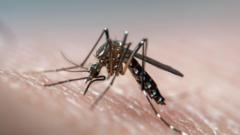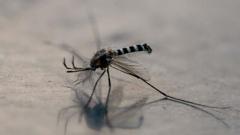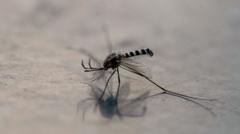In an unconventional approach to combating mosquito-borne diseases such as dengue, yellow fever, and Zika, scientists have successfully made male mosquitoes deaf, inhibiting their ability to mate with females. The innovative strategy hinges on understanding that male mosquitoes depend on sound to locate females, particularly the rhythmic wingbeats that attract them.
Researchers from the University of California, Irvine conducted experiments on Aedes aegypti mosquitoes—infamous for transmitting viruses to an estimated 400 million individuals annually. The team focused on disrupting a specific genetic pathway that male mosquitoes use for auditory perception, particularly targeting a critical protein known as trpVa essential for hearing.
The results were striking. In controlled environments, the genetically modified males exhibited no mating behavior, even when present with females for extended periods. These deaf male mosquitoes failed to detect the acoustic signals crucial for reproduction, leading to zero physical contact. Meanwhile, their wild counterparts efficiently copulated, ensuring the fertilization of nearly all the females in the same enclosure.
The findings were reported in the journal PNAS by researchers from the University of California, Santa Barbara, and have sparked discussions on the potential for sound-related interventions in mosquito control. Dr. Joerg Albert, a specialist in mosquito mating behavior from the University of Oldenburg in Germany, remarked on the significance of the research. He highlighted the study as a key molecular testing ground establishing the vital role of hearing in mosquito reproduction and raised concerns about the ecological impact of male mosquitoes losing their hearing abilities, which could lead to population declines.
In addition to this innovative method, alternative strategies being explored in mosquito management include releasing sterilized males into regions impacted by mosquito-transmitted diseases. While mosquitoes can pose health risks, they also play important ecological roles by serving as food sources for various wildlife and contributing to pollination.











